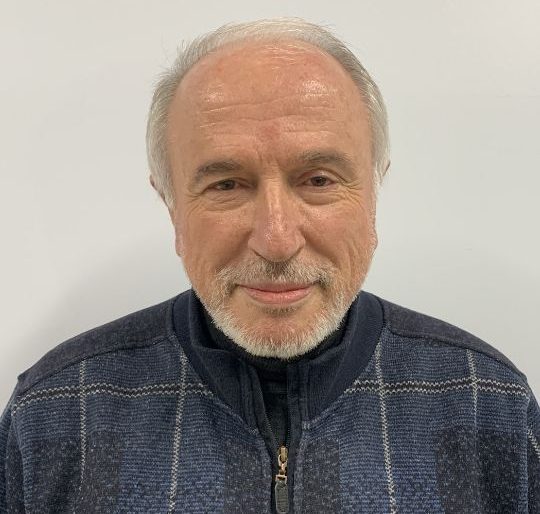
- 所属
- 環境放射能研究所
- 外部リンク
プロフィール
My researches were focused on the environmental modelling in several areas: Watershed Hydrology, River flow, Flood forecasting ( 1971-73 and 2000-now), Coastal Hydrodynamics – waves ( including tsunami), currents, turbulence, sediment transport ( 1975-1986, 1998-2013), radionuclide transport in surface waters, decision support systems for nuclear emergency management ( 1986-now)
研究テーマ
- Modeling of radionuclide transport in surface waters after Chernobyl and Fukushima Daiichi accidents
- Development and implementation of the decision support systems for offsite nuclear emergency management
- Computational Hydrology, River& Marine Computational Hydraulics & Fluid Dynamics.
分野
Environmental Modeling . Hydrological dispersion of radionuclides
キーワード
Fukushima Prefecture, Chernobyl, Radionuclides, Radiocesium, Modeling, Sediments, Computational Hydrology, Computational Hydraulics
研究概要
My research activities have started from the research in Computational Hydrology during the preparation of my Diploma of Engineer Hydrologist. However in my PhD studies I have turned to the model development for coastal areas hydrodynamics. I developed the non – hydrostatic long wave model of wave transformation in coastal areas, which was well known as “Zheleznyak-Pelinovsky equations” in the Soviet tsunami research community. Also I studied the bottom turbulence boundary layer under the waves by the modelling tools. Next sharp turn in my researches has happen 5 May 1986 when my background in hydrological, hydraulic and fluid mechanics modelling has been required by the Task Force Unit created at the Academy of Sciences of Ukrainian Soviet Republic for the assessment of the environmental consequences of the Chernobyl accident 26.04.1986. Guided by me hydrological team in this Unit was transformed at the end of 1986 into the Department of Environmental Modeling of Institute of Mathematical Machine and Systems. As a Head of this Department I have been responsible for the development of the set of the models which created the basis of the national decision support system for prediction 137Cs and 90 Sr transport in the rivers impacted by the Chernobyl accident and for the justification of the water protection measures . The developed by my team models have been implemented since beginning of 90th into the EC funded real-time online decision support system for nuclear emergency – RODOS. The further improvements and extensions of RODOS have been provided last decade within the EC RTD projects, The RODOS system is used in Crisis Centers of many countries. The models were tested within the set of IAEA CRP Programs: VAMP ( I was a chairmen of River/Reservoir Group), BIOMOVS, EMRAS, MODARIA. In 2013 I met a new challenge – the ability to implement my Chernobyl experience for the modelling of radionuclide transport in watersheds, rivers and reservoirs contaminated after the Fukushima Daiichi accident. I have started the work in IER in November 2013. We developed and customized for the Fukushima conditions a set of the watershed and river/ reservoir / coastal areas models with the support from my former Kiev team ( the key role was played by Dr Sergey Kivva) using the data collected by the hydrological team of IER
ひとこと
The decontamination activities continue in the Fukushima prefecture including the works provided to diminish 137Cs concentrations in water and sediments in the rivers crossing the contaminated areas. My goal is to use the developed modelling tools for the assessment of the efficiency of such countermeasures and for the selection of most efficient measures. The new knowledge on radionuclide dynamics in surface water obtained in IER by the measurements and by the modelling for the specific conditions of Fukushima region will provide significant input into the world science of aquatic radiology, As a scientist I am happy to participate in these challenging researches in the international team of the great spirit. The comparison of the radionuclide behaviour in Chernobyl and Fukushima areas can extend the significance of such researches. Therefore I will put my efforts as for the research in the Fukushima Prefecture as also for the Chernobyl area researches. Such possibilities for IER are open by new project of the SATREPS program The project will be implemented in Ukraine by IER, Fukushima University and CRIED,at University of Tsukuba in Chernobyl Exclusion Zone and Kiev city since April, 2017. Our goal is to obtain within the project new scientific knowledge and to help Ukraine in the improvement of the management of the Chernobyl exclusion zone. We will use the experience of Japanese team of the researches in Fukushima Prefecture supported by the modern technologies of measurement and modelling. I hope to contribute in IER to recovery of the both main areas of my researches- Chernobyl and Fukushima.
好きなもの、趣味
Car travels in mountain and coastal areas of Tohoku. Hiking. Onsens, Japanese culture, art, culinary, drinking habits. Books. Movies.
略歴
- 1973年
Diploma Engineer (M.Sc) Hydrological Engineering, Odessa State Environmental University, Ukraine
- 1974年
Meteorologist, Soviet Air Force
- 1975年
unior Researcher then Researcher, Department of Wave Hydrodynamics, Institute of Hydromechanics, Academy of Sciences of Ukrainian Soviet Republic
- 1983年
Ph.D in Fluid Mechanics, Faculty of Mathematic and Mechanics, Kiev National University
- 1986年
Head, Department of Environmental Modeling, Institute of Mathematical Machines and Systems, National Academy of Sciences of Ukraine
- 2013年
Project Professor, Professor (04.2015-03.2016) at Institute of Environmental Radioactivity, Fukushima University
受賞歴
- 2004年
Ukrainian State Prize in Science and Technology, the country’s highest RTD award that has been awarded for the development and implementation of the computerized systems for the decision support to mitigate the consequences of the Chernobyl nuclear accident
- 2006年
the President of Ukraine Medal “For Merits” for the inputs into the Chernobyl accident mitigation
